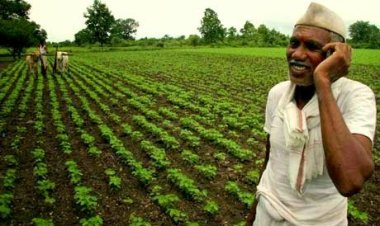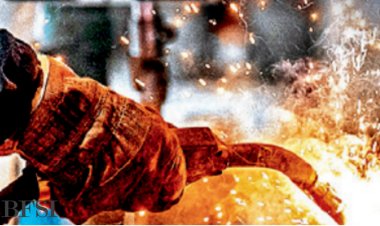Pakistan sliding deeper into Chinese infra debt trap? What $10 bn rail loan could entail
The Print

New Delhi: Taking a loan of nearly $10 billion from China for a major railway project could create additional risks for Pakistan’s economy in the future, especially if “poor” borrowing techniques are not addressed, analysts have told ThePrint.
The estimated $9.8 billion Main Line (ML-1) rail project, stalled for nearly four years, seeks to link Peshawar to Karachi and has been hailed as the backbone of the China-Pakistan Economic Corridor (CPEC).
In November last year, Pakistan Finance Minister Ishaq Dar had said that Beijing had agreed to “fast-track” the processing for the project. This came a few months after a Joint Coordination Committee (JCC) of Pakistan and China made high-level commitments to execute the project.
In August, the International Monetary Fund (IMF) had lent $1.1 billion to Pakistan with certain contingencies as a rider.
Reports indicate that work on the ML-1 project could start as early as March this year.
Ahsan Iqbal, Pakistan’s planning minister, recently told the Financial Times that work on the project would happen in phases with an initial cost of $3 billion. The loan would be repayable over 20-25 years and would be “concessional”, he had said.
It would appear that Pakistan continues to court large Chinese loans despite its current financial crisis — marked by a wide current account deficit (CAD) which has only started to shrink in the last few months. Pakistan also has about $100 billion in external debt.
The CAD increased to 4.6 per cent of GDP in FY22, up from 0.8 per cent in FY21. The central bank is aiming for CAD to be 3 per cent of GDP this fiscal.
According to IMF data, 30 per cent of Pakistan’s total foreign debt is owed to China — roughly $30 billion. This is three times more than its IMF debt and is greater than its borrowings from the World Bank and Asian Development Bank combined.
Also, total planned investment under CPEC has been pegged at $62 billion between FY2015 and FY2030, of which projects valued at $27.4 billion have been realised, data from Islamabad-based Sustainable Development Policy Institute (SDPI) shows.
Analysts agree that without a pivot towards exports, projects like ML-1 will only exacerbate Pakistan’s economic challenges in the future.
They also raised concerns about Chinese interest rates for loans that are usually 1-2 per cent higher than those offered by Organisation for Economic Co-operation and Development (OECD) lenders.
Debt pile, ‘poor’ borrowing techniques
After attempting to avert default last year, Pakistan is facing debt repayment obligations. The Shehbaz Sharif-led government, which assumed office in April last year, is preparing for IMF review meetings at a time when the country is reeling with low foreign exchange reserves.
Analysts say the crisis boils down to Pakistan’s inability to restructure its economy towards higher exports. In a report for Dawn, former finance minister Miftah Ismail highlighted the need for Pakistan to focus on export growth, and to reassure markets and lenders.
According to Uzair Younus, director of the Pakistan Initiative at the Atlantic Council’s South Asia Center, borrowing more for projects like ML-1 from China could create additional risks for Pakistan’s economy down the line.
“Without reforming and restructuring its economy, additional debt taken on for infrastructure projects, whether from China or anyone else, is likely to exacerbate the challenges Pakistan is facing. Let’s say 4-5 years from now there’s another need for an IMF bailout. Then, such debts will be a sticking point,” Younus told ThePrint.
Asked if there are concerns about Pakistan falling into a debt trap like Sri Lanka, he said, “The concerns about a Sri Lanka-type default are valid, given the liquidity crisis in Pakistan. But I think the Chinese are not going to move forward on a major project until broader macroeconomic risks are dealt with within Pakistan.”
Karachi-based business journalist Ariba Shahid, meanwhile, compared Pakistan and Sri Lanka’s history of “poor” borrowing decisions. “Sri Lanka reached a default situation because they were not in an IMF programme, unlike Pakistan which is part of one. That said, there are similarities with regard to both countries having a history of poor borrowing techniques,” she said.
Foreign reserves & political motivations
Pakistan’s foreign reserves have sunk to $5.8 billion, meaning it has an import cover of merely 1.1 months. Also, key sectors like energy are facing circular debt, essentially a pile-up of unpaid government subsidies.
Shahid told ThePrint that though Pakistan’s imports are likely to rise after the central bank’s withdrawal of restrictions on Letters of Credit (LCs) for goods imports, exports will probably fall because subsidies for exporters under schemes like Export Finance Scheme (EFS) and Long Term Financing Facility (LTFF) have been removed.
“I see Pakistan’s foreign reserve position getting worse in the months to come, especially with other debt obligations. The only way to fix it is with foreign inflows from friendly countries like the UAE, China and Saudi Arabia but that’s contingent on the next IMF review meeting,” she added.
Analysts agree that Pakistan’s railways need a revamp, given the spate of accidents such as the derailment in June 2021 in Sindh’s Ghotki district that resulted in at least 65 deaths.
However, they also hinted at prevailing political motivations.
“The current coalition government which is led by PML-N (PM Shehbaz Sharif’s party) is likely to try and push for some material progress on ML-1 ahead of general elections,” said Younus.
Shahid concurred, adding that the PML-N government would want something to show on their “political report card” ahead of the polls, which are slated to be held around the second half of this year.
(Edited by Amrtansh Arora)
Disclaimer: This page expresses the views of the author. We publish it on this site for discussion
– Senthalam news section












